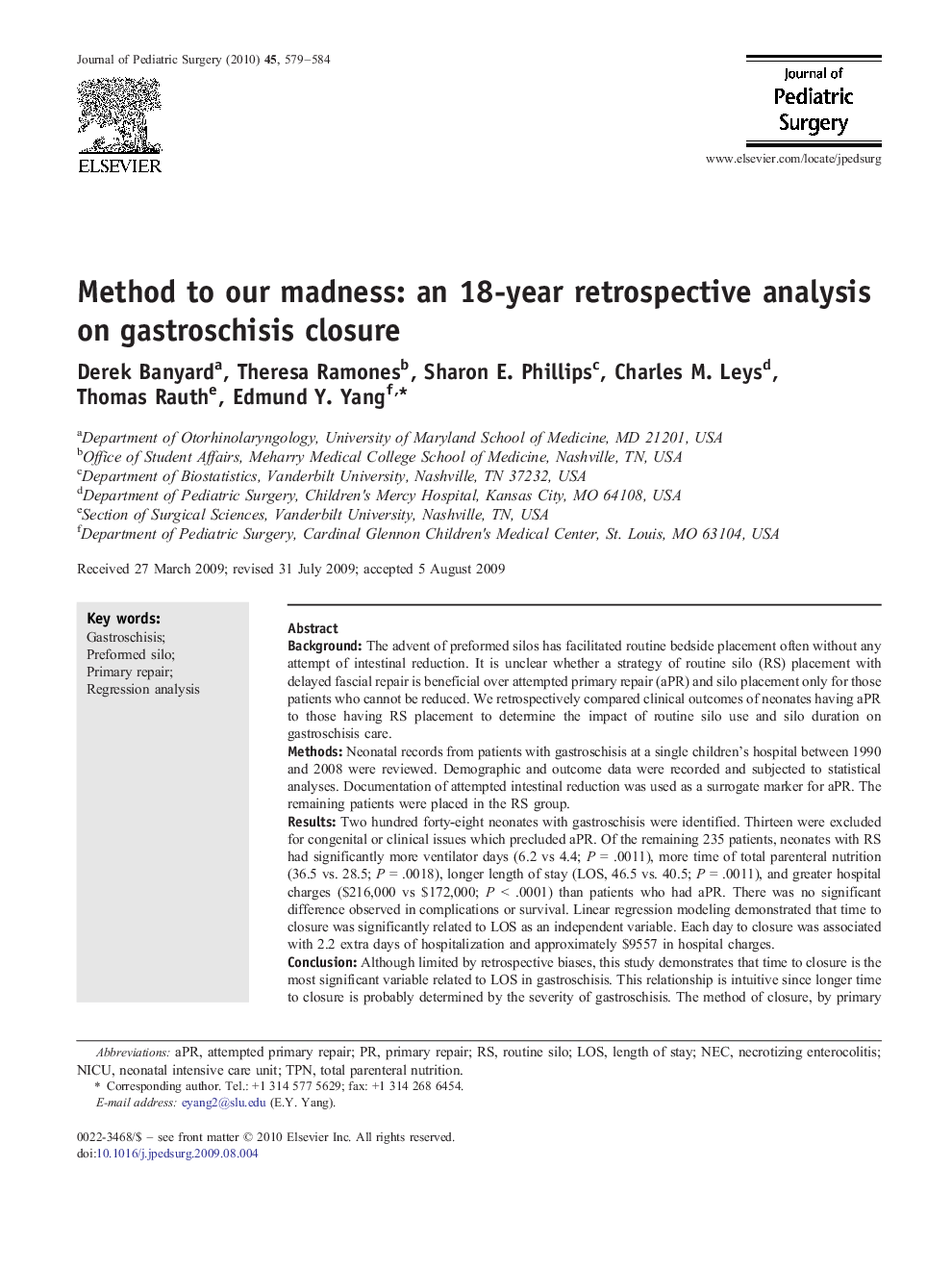| Article ID | Journal | Published Year | Pages | File Type |
|---|---|---|---|---|
| 4157560 | Journal of Pediatric Surgery | 2010 | 6 Pages |
BackgroundThe advent of preformed silos has facilitated routine bedside placement often without any attempt of intestinal reduction. It is unclear whether a strategy of routine silo (RS) placement with delayed fascial repair is beneficial over attempted primary repair (aPR) and silo placement only for those patients who cannot be reduced. We retrospectively compared clinical outcomes of neonates having aPR to those having RS placement to determine the impact of routine silo use and silo duration on gastroschisis care.MethodsNeonatal records from patients with gastroschisis at a single children's hospital between 1990 and 2008 were reviewed. Demographic and outcome data were recorded and subjected to statistical analyses. Documentation of attempted intestinal reduction was used as a surrogate marker for aPR. The remaining patients were placed in the RS group.ResultsTwo hundred forty-eight neonates with gastroschisis were identified. Thirteen were excluded for congenital or clinical issues which precluded aPR. Of the remaining 235 patients, neonates with RS had significantly more ventilator days (6.2 vs 4.4; P = .0011), more time of total parenteral nutrition (36.5 vs. 28.5; P = .0018), longer length of stay (LOS, 46.5 vs. 40.5; P = .0011), and greater hospital charges ($216,000 vs $172,000; P < .0001) than patients who had aPR. There was no significant difference observed in complications or survival. Linear regression modeling demonstrated that time to closure was significantly related to LOS as an independent variable. Each day to closure was associated with 2.2 extra days of hospitalization and approximately $9557 in hospital charges.ConclusionAlthough limited by retrospective biases, this study demonstrates that time to closure is the most significant variable related to LOS in gastroschisis. This relationship is intuitive since longer time to closure is probably determined by the severity of gastroschisis. The method of closure, by primary repair or silo, is of secondary importance. Conversely, unnecessarily increasing the time to closure may increase the LOS. The speed of reduction, whether through primary repair or by silo, should be guided by physiologic principles.
